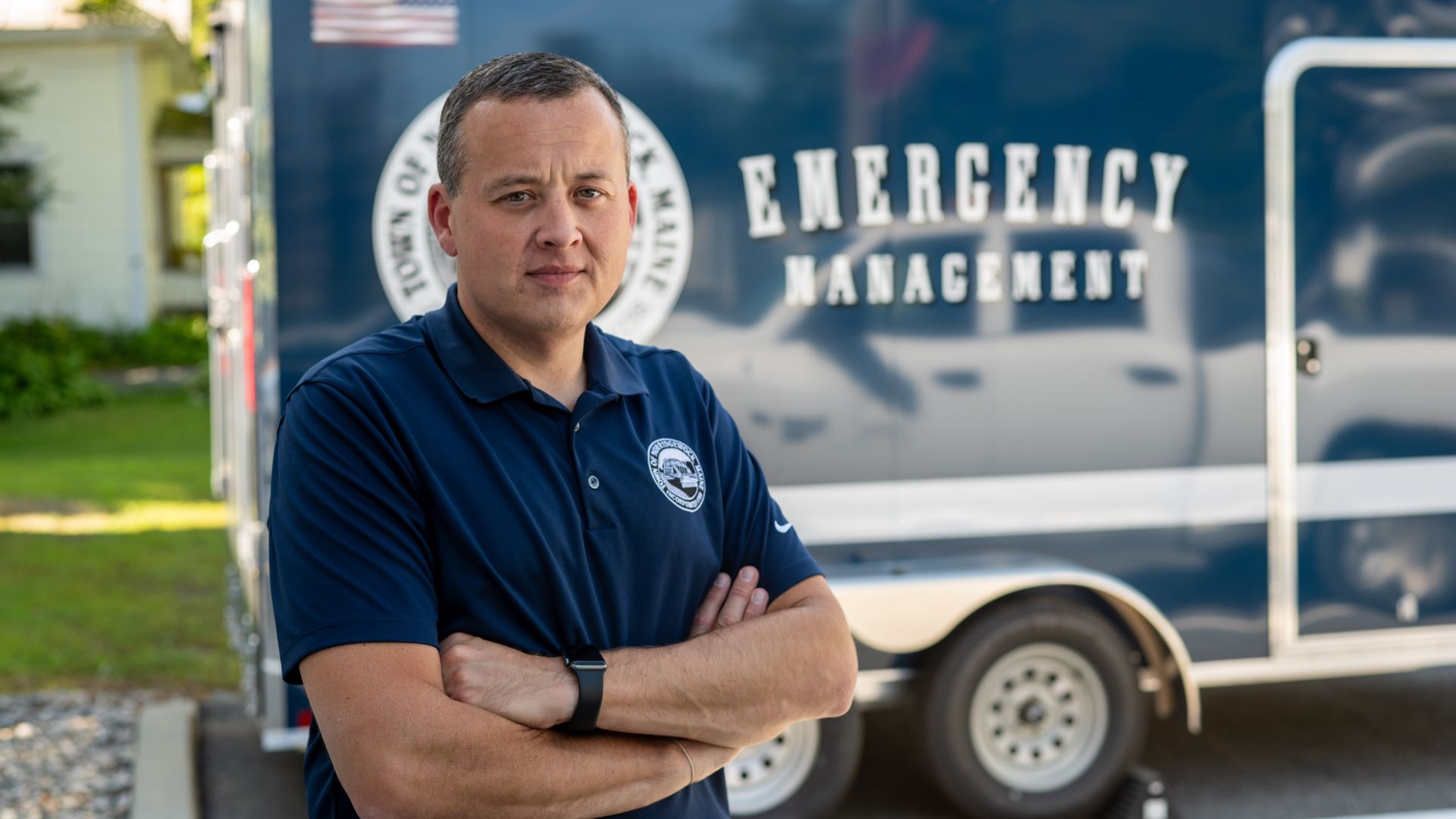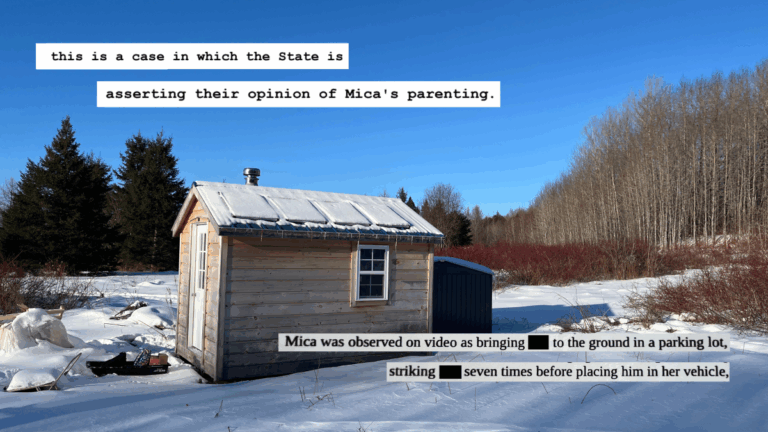The sun was beaming down and hardly a cloud was in the sky when I arrived at the Norridgewock town office in late July to interview town manager and clerk Richard LaBelle for a story on administering elections.
No storms were forecasted and the Kennebec River was well beneath its banks, which is why I was surprised to see a dark blue trailer emblazoned with the words “Emergency Management” and the town seal parked in front of the office entrance.
I knew that Norridgewock had gotten hammered by disastrous flooding from the December 2023 storms. Not long after the rain subsided, Norridgewock resident and Maine Monitor reader Susan Millet, who I was meeting after LaBelle, reached out to me and detailed her harrowing escape from the swelling Kennebec River.
I didn’t think the immediate disaster response was still ongoing, though, so at the end of our interview on the election I asked LaBelle what the deal with the trailer was. His answer was illuminating.
Norridgewock, much like the rest of western and central Maine, had a scrambled emergency response to the December flooding. First responders were bogged down by washed out roads, downed communications and fallen trees, while state and county officials were juggling more pressing emergencies elsewhere.
Town staff couldn’t reach caches of cots and blankets to stock the emergency shelter, and the main bridge out of Norridgewock was under threat from the flooded Kennebec. LaBelle felt isolated and overwhelmed that day — feelings he never wanted his town to experience again.
That was why he spearheaded efforts to secure an emergency management trailer stocked with supplies for the town. Along with the trailer, LaBelle was pursuing flood resilient infrastructure projects and revising Norridgewock’s emergency response protocols and alert system.
Those initiatives — and LaBelle’s serious, devoted demeanor when he spoke about combating the intensifying and increasing number of floods he is seeing — made him and Norridgewock’s approach to climate resilience stick out to me.
This is the manager of a small town who is simultaneously juggling his role as town clerk and, at the time, the freshly announced departure of its largest industry and employer, the footwear company New Balance.
Yet LaBelle and his staff remained on top of every FEMA grant opportunity, embraced Norridgewock’s role as a shelter for neighboring towns, secured emergency supplies and were still looking for opportunities to make the town resilient in the face of future floods.
After speaking with LaBelle I sat with Millett, the Norridgewock resident, at her dining room table and heard about how the town’s discombobulated evacuation directions left her wading through icy waters to ferry her pets from her house to her car, escaping the dangerous Kennebec River as it crested.
I retraced LaBelle and town fire chief Todd Pineo’s steps on the day of the flooding, peering down into the river from the bridge where they stood, redirecting traffic, trying to imagine the Kennebec’s blistering current reaching the bridge’s underside.
My reporting also meant taking tough questions to the state, whose Department of Transportation officials had allegedly ignored LaBelle’s pleas to inspect the bridge out of concern for its structural integrity, and to the Maine Emergency Management Agency, which was slow to pass along the town’s federal disaster assistance money from the flood.
I read and reread the hundreds of pages in the state’s 2023 hazard mitigation report, scrutinizing its recommendations in relation to what is actually available for municipalities like Norridgewock, trying to identify what the town can pursue on its own as it waits for the state to implement broader hazard mitigation goals.
The process of reporting this story reminded me again and again of the severe consequences that accompany climate change, and the importance of taking precautions like Norridgewock has.
Emergency management experts have told me that Maine has the potential to set an example on climate resilience for other states. As always, we’ll be watching closely to see if it does and reporting back to you.







